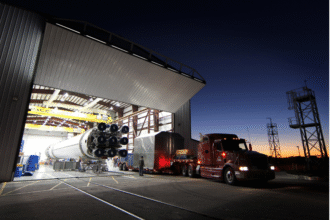Introduction: Why the 2025 Cybersecurity Tech Roadmap Matters
As global cyber threats evolve, cybersecurity is no longer an IT afterthought—it's a core business strategy. In 2025, organizations worldwide, particularly in the US and Europe, are accelerating their security infrastructures to counter sophisticated adversaries, AI-powered attacks, and stricter compliance demands.
This Cybersecurity Tech Roadmap 2025 helps CISOs, IT leaders, and enterprise decision-makers grasp the latest innovations, frameworks, and priorities—empowering them to build smarter strategies, purchase wisely, and comply with evolving regulations. Whether you're planning internal security or seeking to buy enterprise security platforms, this guide highlights the most critical tech shifts and Gartner security trends shaping 2025.
📌 For organizations planning broader infrastructure upgrades, the IT Cloud Migration Strategy Roadmap is also an essential companion to this article.
1. The Cybersecurity Landscape in 2025
Organizations are moving from reactive to proactive security. Gartner emphasizes that effective cybersecurity programs must support business continuity and collaborative risk management. CISOs are evolving from protectors to enablers of transformation, with over 58% of boards now willing to assume more technology risk—if supported by resilient cybersecurity.
This shift includes incorporating real-time adaptive security, merging data across devices and networks and enabling automatic policy enforcement. It’s about building visibility, resilience, and flexibility into systems—so cyber defenses are ready before the first threat materializes.
2. Key Security Challenges Enterprises Face in 2025
🔻 Common security pain points include:
- Multi-vector ransomware targeting cloud services and users
- Insider threats and human error, which still account for over 30% of breaches
- Supply chain breaches, especially via third-party vendors
- Shadow IT in hybrid and remote environments
- Compliance pressure from GDPR, CCPA, NIS2, and future AI governance laws
These trends demand layered, adaptive, and intelligence-driven security protocols.
3. Core Technologies in the Cybersecurity Tech Roadmap 2025
Zero Trust Architecture (ZTA)
“Never trust, always verify” is the baseline. ZTA assumes the network is hostile and authenticates every access request with identity, device, and risk-based data.
Secure Access Service Edge (SASE)
Combines SD-WAN and cloud-native security for secure, low-latency access to corporate applications—especially relevant in hybrid work models.
Cloud Security Posture Management (CSPM)
Provides visibility into cloud misconfigurations, policy violations, and compliance drift in services like AWS, Azure, and Google Cloud.
Extended Detection & Response (XDR)
Unifies telemetry from endpoints, cloud, and networks to deliver threat detection and remediation. Vendors like CrowdStrike Falcon and Palo Alto Cortex XDR are leaders in this space.
4. Future‑Ready Threat Detection Systems
Threat detection in 2025 is driven by:
- AI-enhanced SIEM tools
- MITRE ATT&CK-based threat modeling
- Deception technology (decoy servers and traps)
- Behavioral analytics and anomaly detection
For example, CrowdStrike Falcon uses AI to track behavior and identify abnormal deviations, while Palo Alto Cortex XDR merges endpoint and network data for higher detection accuracy.
5. The Role of AI and Automation in Enterprise Security
Artificial Intelligence has become central to cybersecurity operations. Gartner predicts that over 80% of enterprise security platforms in 2025 will feature embedded AI/ML.
Benefits include:
- 24/7 monitoring without fatigue
- Automatic alert triage with fewer false positives
- Autonomous response via AI-driven playbooks
- Better prioritization through risk scoring
For deeper context, refer to this Harvard Business Review article on AI risk in cybersecurity that explores governance challenges emerging alongside automation.
6. Navigating Compliance in the US and Europe
Enterprises must stay ahead of compliance evolution:
- US: CCPA, HIPAA, and SEC cyber-disclosure rules
- EU: GDPR and NIS2 Directive requiring breach reporting and robust IT security
- Emerging: AI regulation bills mandating ethical data use and algorithm transparency
Best practice: Use Continuous Exposure Management (CEM) platforms to constantly assess vulnerabilities and compliance gaps in real time.
7. Top Vendors to Watch: CrowdStrike and Palo Alto
CrowdStrike Falcon
- Renowned for its AI-powered endpoint protection and threat intelligence
- Winner of multiple Gartner “Customer’s Choice” awards
- Integrates seamlessly with existing SIEMs and identity platforms
Palo Alto Cortex XDR
- Blends endpoint, network, and cloud analytics
- Excels in automated threat correlation and forensic data tracking
- Highly rated in Forrester Wave and Gartner Magic Quadrant
These tools represent the future of unified, AI-driven security platforms.
8. Strategic Recommendations for 2025
To future-proof your cybersecurity posture:
- ✅ Adopt a Zero Trust model from endpoint to application
- ✅ Unify threat intelligence via XDR and CSPM tools
- ✅ Invest in automation to minimize response times
- ✅ Map security tools to business outcomes
- ✅ Regularly audit vendors and cloud infrastructure
This aligns well with enterprise tech migration strategies discussed in the Cloud Migration Strategy Roadmap.
9. FAQs
What’s the biggest trend in cybersecurity for 2025?
AI-powered, real-time XDR platforms with built-in zero trust logic.
Who are the top cybersecurity vendors to consider?
CrowdStrike, Palo Alto, SentinelOne, and Microsoft Defender.
What is Gartner saying about cybersecurity this year?
Focus on adaptive governance, data-centric security, and aligning tools with business resilience.
Conclusion
The Cybersecurity Tech Roadmap 2025 isn't just about defense—it's about empowerment, automation, and strategic readiness. From integrating AI and behavioral analytics to adopting Zero Trust and CSPM, the roadmap helps enterprises stay one step ahead of cyber attackers.
By following this roadmap and leveraging solutions from trusted vendors, organizations can build not just defense—but true digital resilience. Start evaluating your systems now. Stay updated with trusted sources like Gartner, the Harvard Business Review, and strategic integration guides like the Cloud Migration Strategy Roadmap.









